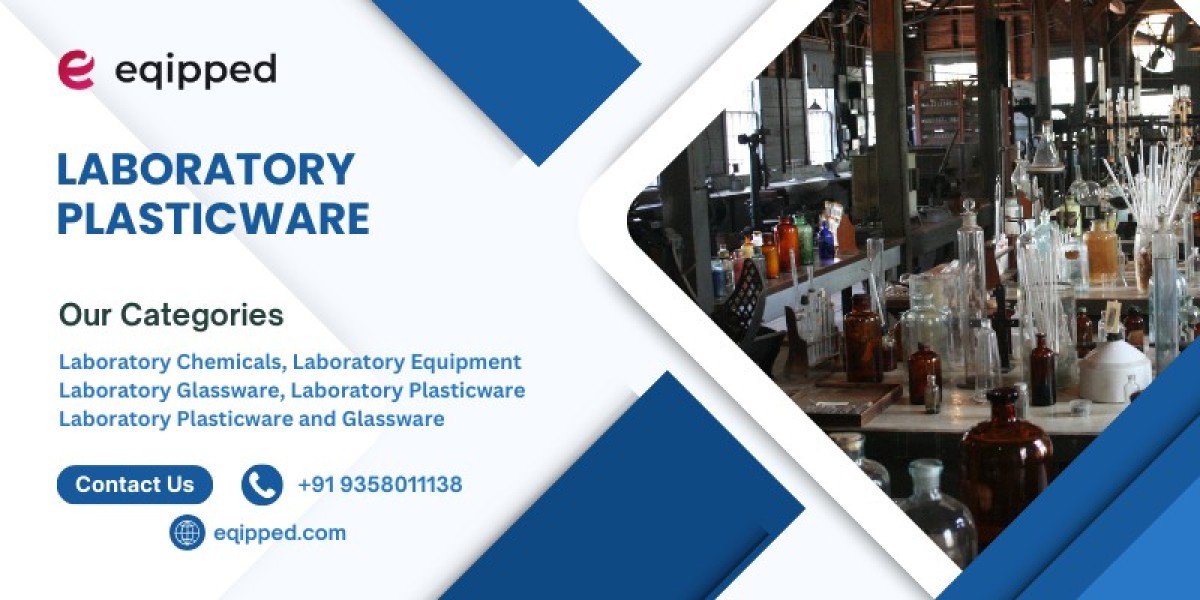In the world of science, accuracy, reliability, and safety are non-negotiable. Every laboratory, whether in a school, research center, or industrial facility, depends on well-structured tools to carry out experiments effectively. While glassware has long been a staple in labs, laboratory plasticware has become equally important due to its convenience, affordability, and versatility.
This blog explores what laboratory plasticware is, why it matters, its different types, applications, and why every modern lab needs it.
What Is Laboratory Plasticware?
Laboratory plasticware refers to lab equipment and accessories made from durable plastics designed specifically for scientific use. These are not everyday plastics but specialized materials like polypropylene (PP), polycarbonate (PC), polyethylene (PE), and polystyrene (PS) that can withstand chemicals, temperature variations, and rigorous handling.
Plasticware includes items such as beakers, measuring cylinders, test tubes, Petri dishes, centrifuge tubes, reagent bottles, and more. These tools are designed to support experiments in chemistry, biology, medicine, and industrial research.
Why Is Laboratory Plasticware Important?
Plasticware plays a vital role in daily laboratory operations for several reasons:
Cost-Effectiveness – Compared to glassware, plasticware is more affordable, making it a budget-friendly option for institutions.
Safety – Plasticware does not shatter like glass, reducing the risk of injury.
Convenience – Many plastic items are disposable, ensuring hygiene and saving time on cleaning.
Versatility – From storing chemicals to culturing microbes, plasticware is suitable for a wide variety of experiments.
Accessibility – It is lightweight, easy to handle, and available in multiple sizes and designs.
These advantages explain why laboratories across schools, universities, hospitals, and industries continue to rely heavily on plasticware.
Common Types of Laboratory Plasticware
Laboratory plasticware comes in many forms, each designed for a specific purpose.
1. Measuring Plasticware
Beakers – Used for mixing and heating liquids.
Measuring Cylinders – Provide accurate volume measurements of solutions.
2. Sample Handling and Storage
Test Tubes – Ideal for small experiments and reactions.
Centrifuge Tubes – Used for separating mixtures under high-speed rotation.
Reagent Bottles – Store chemicals safely without leakage.
3. Microbiology and Biotechnology Tools
Petri Dishes – For growing and observing microbial colonies.
Pipette Tips – Provide precision in transferring liquids.
Cryovials – Preserve biological samples at ultra-low temperatures.
4. Laboratory Accessories
Funnels – For transferring solutions and powders.
Wash Bottles – Dispense distilled water or cleaning solutions.
Racks and Holders – Keep test tubes and pipettes organized.
This variety makes plasticware indispensable in laboratories worldwide.
Materials Used in Laboratory Plasticware
Not all plastics are the same. The type of plastic determines how the item will perform. Here are some commonly used materials:
Polypropylene (PP): Chemical-resistant, autoclavable, and widely used in centrifuge tubes.
Polycarbonate (PC): Tough, transparent, and impact-resistant.
Polystyrene (PS): Economical and clear, mainly for disposable products.
Polyethylene (PE): Flexible, resistant to mild acids and bases.
Teflon (PTFE): Extremely resistant to harsh chemicals and high temperatures.
Understanding the material is crucial before choosing plasticware for a specific experiment.
Applications of Laboratory Plasticware
Laboratory plasticware is used in almost every scientific field:
Educational Institutions: Safe and cost-effective for teaching experiments.
Clinical Laboratories: For sample storage, testing, and handling biological materials.
Pharmaceutical Industry: Helps in drug testing, formulation, and quality control.
Biotechnology Research: Used in PCR, DNA analysis, and sterile applications.
Food and Beverage Testing: Ensures quality checks for contamination and safety.
Environmental Studies: Collecting and analyzing soil, water, and air samples.
Its ability to serve across multiple sectors makes laboratory plasticware a universal requirement.
Benefits of Using Laboratory Plasticware
Why do scientists, researchers, and students prefer plasticware? The answer lies in its benefits:
Durability: Resistant to breakage.
Affordability: Costs much less than glassware.
Lightweight: Easy to transport and store.
Hygiene: Disposable options reduce contamination risks.
Flexibility: Available in a wide range of designs.
Limitations of Laboratory Plasticware
Despite its benefits, plasticware has a few limitations:
Heat Sensitivity: Cannot tolerate very high temperatures like glass.
Chemical Limitations: Some strong solvents may damage certain plastics.
Environmental Impact: Disposable items contribute to plastic waste.
Therefore, laboratories often balance the use of plasticware with glassware to achieve the best results.
How to Choose the Right Laboratory Plasticware
When selecting laboratory plasticware, consider these factors:
Experiment Type: Different experiments require specific items (e.g., Petri dishes for microbiology, centrifuge tubes for separation).
Chemical Compatibility: Ensure the plastic can withstand the chemicals being used.
Sterility: For biological experiments, always opt for pre-sterilized items.
Budget: Disposable items are cheaper, but reusable plasticware may be more cost-effective in the long run.
Brand Quality: Choose reliable and high-quality laboratory suppliers to ensure accuracy and safety.
Best Practices for Using Laboratory Plasticware
To maximize the life and efficiency of laboratory plasticware:
Avoid exposing plasticware to extreme heat unless it is autoclavable.
Clean reusable items thoroughly after each experiment.
Dispose of single-use products responsibly.
Store plasticware in a cool, dry place.
Label containers properly to avoid cross-contamination.
Future of Laboratory Plasticware
The future is shifting towards sustainability and innovation. Researchers are exploring:
Biodegradable plastics to reduce environmental waste.
Reusable and stronger alternatives that last longer.
Smart plasticware with digital indicators for improved precision.
This ensures laboratories can stay eco-friendly while maintaining accuracy in their work.
Conclusion
Laboratory plasticware has become a backbone of modern science. Its affordability, safety, and convenience make it a preferred choice for educational institutions, research labs, and industries worldwide. While it may not completely replace glassware, it offers unique advantages that simplify everyday laboratory work.
Whether you are a student learning basic experiments, a researcher analyzing complex samples, or a professional working in clinical or industrial labs, plasticware ensures efficiency, reliability, and safety.
By choosing high-quality laboratory plasticware and following best practices, laboratories can achieve accurate results while keeping costs under control. As innovations continue, the future promises even more sustainable and advanced solutions in this essential field.
In short, laboratory plasticware is more than just equipment—it is a key enabler of scientific progress.













